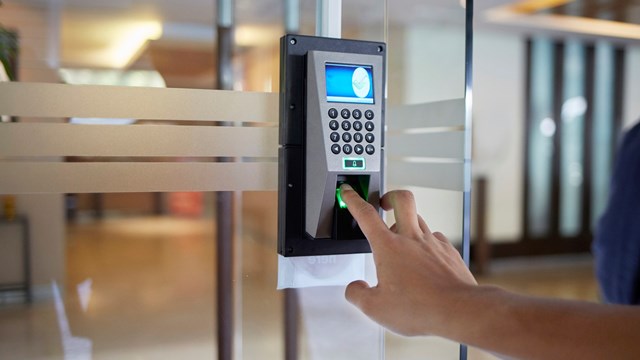Not so long ago, having a security system required drilling through the walls of your cooperative or condominium building and involved installing many spools of wire attached directly to a bulky keypad.
Sophisticated and Secure
Today’s systems are sleek by comparison, with touch-pads offering enhanced features to help manage busy multifamily lifestyles. They have evolved beyond just security breaches or fire alarms into command centers from which a resident can monitor the indoor environment of their home or a property manager can send out alerts in case of an emergency.
These newer more sophisticated security systems can perform many functions in most apartments or multi-dwelling units—with features ranging from the very basic to the very advanced. Systems can keep tabs on any number of variables, including temperature changes that might indicate that the heat is off, or a flood has occurred. These systems can even control lighting, and give homeowners the ability to add cameras to look in on loved ones and pets. Other enhancements include a message center for recorded messages.
Wireless Alarms
Wireless security systems have brought security to everyone who wants it, and come in small, sleek designs to compliment a home’s décor. The systems require very little wiring—or none at all—and are removable, allowing residents to bring the system to their next condo or co-op. Alarm event signals can be sent through telephone lines or radio as a backup alternative means to communicate with the central station.
There are also systems to fit any budget or desired security level. The out-of-the-box home security systems sold by electronics and big-box stores can provide a sense of security at a relatively low price-point—though it’s likely that they are limited in function and quality. Depending on a condo or co-op's budget, a custom-designed system may provide many more years of service than one bought off-the-shelf, and most security companies offer maintenance plans to keep the systems they install operating at peak performance.
If your building opts for a custom-designed system, one of the first steps a security professional will do is perform a site visit to discuss the needs of your residents and get a sense of the environment around the building or complex. Your complex may be located near or adjacent to an area that could have additional security concerns, such as a public park. Total knowledge of how to address location-based security concerns is one of the key reasons to have a system tailored to the needs of your particular community.
Fire and Life Safety Monitoring
There are many ways to reduce fire deaths through advance systems and alerting options that are available. An integrated fire alarm system is legally mandated for most apartment complexes. Individual units also need to meet fire alarm codes. Building administrators may want to add carbon monoxide monitoring and audible fire alerting through an intercom system, some of which also may be required by code in your locality.
In addition to these, many residents are now adding medical alert monitoring for loved ones who need the extra coverage in the event of a fall, an injury, or some other health emergency. Many of the systems have the ability to monitor a patient’s vital signs and send them to their doctor, speeding up response time. For a condo or apartment unit, the use of sensor technology can be incorporated into the household itself—for example, a sensor can be placed on the door to a medicine cabinet to make sure an older resident has remembered to take an important medication. The sensor sends a text message to a mobile phone or computer, letting the recipient know an action has taken place. Parents have also found putting a sensor on liquor or medicine cabinets useful in deterring teenage drinking and other unwanted actions through text alerts.
Along with the basic anti-burglary, anti-fire, and health monitoring capabilities, sensor technology is a growing area of interest for homeowners and building maintenance providers for other reasons as well. The use of sensors to monitor changes in pressure or temperature in boilers and other appliances can provide added assurances in the event of a mechanical malfunctioning. A sensor can detect these events and alert property management and maintenance professionals as things happen, saving hours in response time. Automation is available through these systems as well, controlling temperature and lighting for added utility savings.
Who’s Watching?
Camera systems allow residents to look in on their property and are a great complement to the sensor technology. Many people use the cameras in conjunction with the sensors when a text alert is sent - the ability to view what is going on provides even greater peace-of-mind. Cameras as a stand-alone added feature allow users to view the home through their iPad, iPhone or other smart devices when they need to. Alarm systems can be programmed remotely to alert residents when garage doors open, to monitor who is coming and going via self-registration software loaded onto a tablet computer. Intercoms can provide these tasks as well when added to a software program.
Now more than ever, a sense of security has evolved into the management of life inside and outside the home. Thanks to advances in wireless technology and affordable pricing for newly introduced technology, the choices for managing day-to-day activities are nearly infinite.
Joe Ingegno is senior vice president of World Wide Security/GC Alarm based in Garden City, New York.







Comments
Leave a Comment